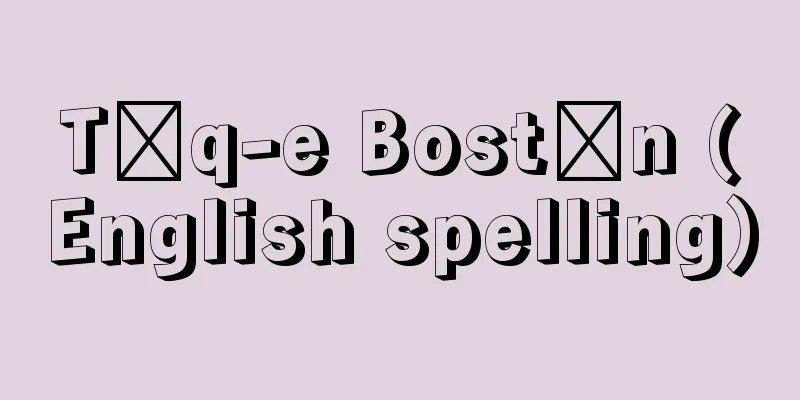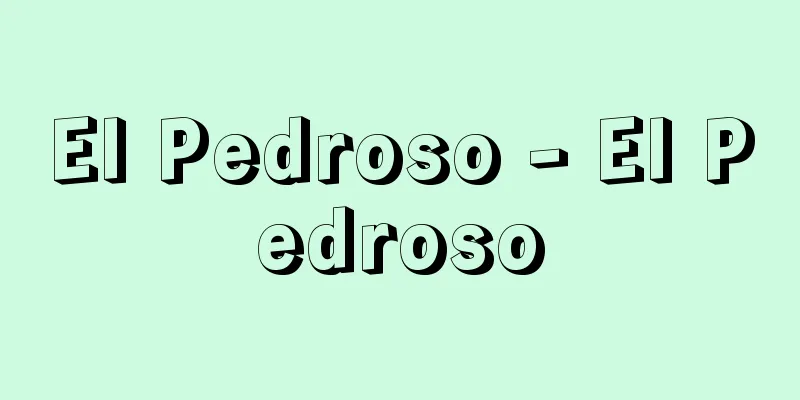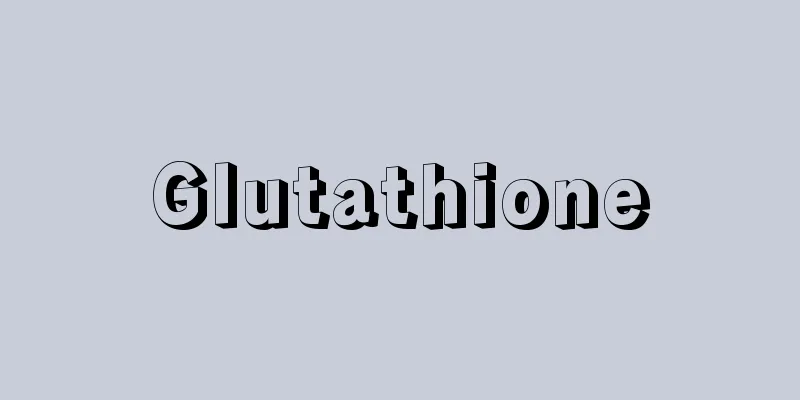Mine sweeper - Soukaitei (English spelling)

|
A small vessel tasked with discovering and disposing of underwater and bottom-dwelling mines to ensure the safety of shipping lanes. A type of warship. From the Russo-Japanese War, when they were first used, until World War I, torpedo boats, old destroyers, and fishing trawlers were used as minesweepers, and during the war, specialized minesweepers began to be built in Britain and other countries. These were steel boats equipped with moored minesweeping equipment for detecting touch mines, and were widely built until World War II. However, they were ineffective against the magnetic, acoustic, and hydraulic mines that appeared during the war, and so the structure of minesweepers and their equipment underwent drastic changes. After the Second World War, measures to make ships non-magnetic, such as using wood or fiberglass-reinforced plastic (FRP) hulls, using non-magnetic metals for various equipment and fittings, and installing demagnetizers to remove residual magnetism, as well as measures to reduce underwater radiation noise by providing vibration-proof supports for the main engine and auxiliary engines, were implemented. Minesweepers equipped with magnetic, acoustic, and mooring sweeping equipment were constructed, and in recent years, unmanned minesweepers have become mainstream. In addition to minesweepers that tow minesweeping equipment to find and detonate mines or confirm that there is no danger of mines, mine hunters appeared in the 1960s that detect mines with sonar and individually detonate them with depth charges or remote-controlled or self-propelled mine disposal equipment, and these types of boats are given importance, and the two types are usually referred to together as minesweepers. As of 2008, about 50 countries have minesweepers. Today's minesweepers are broadly divided into oceangoing types with a standard displacement of 500 to 1,200 tons, coastal types with a standard displacement of 200 to 500 tons, and harbor types of less than 200 tons. Coastal types are generally equipped with both minesweeping and sweeping capabilities, while oceangoing types equipped with deep-diving (300 to 1,000 meters) minesweeping and disposal equipment appeared in the 1980s. Since their creation, minesweepers have been of conventional type, with very few exceptions. In 1986, Australia completed a catamaran-type minesweeper, but it has not performed well, and no other country has followed suit. Some countries are conducting research and development into the practical use of the air cushion craft (ACV) system, and Norway completed and used a type of surface effect ship (SES) minesweeper in 1994 and a minesweeper in 1996, attracting attention from other countries. However, the payload (weight of equipment carried) is smaller than that of conventional types, and there have been no cases of this type being adopted since. [Yasuo Abe] "The World's Ships Vol. 351: Special Feature: New Minesweepers" (1985, Kaijinsha)" ▽ "The World's Ships Vol. 427: Special Feature: The Mechanism of Minesweepers" (1990, Kaijinsha)" ▽ "The World's Ships Vol. 495: Special Feature: The Latest Situation with Minesweepers" (1995, Kaijinsha)" ▽ "The World's Ships Vol. 631: Special Feature: New Mine Warfare" (2004, Kaijinsha) ▽ "Stephen Saunders Jane's Fighting Ships 2010-2011 (2010, Jane's Information Group)" [Reference] |The second ship of the Japan Maritime Self-Defense Force's Yaeyama-class minesweeping ship. Standard displacement 1000t, overall length 67m, overall width 11.8m, speed 14 knots ©Shogakukan "> Minesweeper Tsushima Source: Shogakukan Encyclopedia Nipponica About Encyclopedia Nipponica Information | Legend |
|
水中、水底の機雷を発見、処分し、航路の安全確保を任務とした小型艦艇。軍艦の一種。初めて用いられた日露戦争から第一次世界大戦までは、水雷艇、旧式駆逐艦、トロール漁船などが掃海艇として使われ、大戦中に専用の掃海艇がイギリスをはじめ各国で建造されるようになった。これらは、繋維(けいい)式触発機雷用掃海具をもつ鋼製艇で、第二次世界大戦中まで広く建造されたが、大戦中に出現した磁気、音響、水圧の各感応機雷には役にたたず、掃海艇の構造と掃海具は抜本的に変化することとなった。第二次世界大戦後は、木製または強化プラスチック(FRP)製船体の採用、各種機器・艤装(ぎそう)品に対する非磁性金属の使用、残存磁気除去用消磁装置の設置などの非磁性化対策と、主機・補機の防振支持による水中放射雑音の低減対策を行い、磁気、音響、繋維各掃海具をもつ掃海艇が建造され、近年は無人操縦掃海艇方式のものが主流になっている。掃海具の曳航(えいこう)により、機雷を発見、起爆させるか、機雷の危険のないことを確認する掃海艇に加え、1960年代にはソナーで機雷を探知し、爆雷や遠隔操作あるいは自走式の機雷処分具により個別に爆破処分する機雷掃討艇mine hunterが出現し、この方式の艇が重視されており、通常はこの両者をあわせて掃海艇という。2008年時点で約50か国が保有している。今日の掃海艇は基準排水量500~1200トン級の航洋型、200~500トンの沿岸型、200トン以下の港湾型などに大別され、沿岸型は掃海・掃討兼用艇が普通になり、航洋型には深深度(300~1000メートル)掃海具・処分具装備のものが1980年代に出現した。 掃海艇は誕生以来、ごくわずかな例を除き、通常方式の船型である。1986年にオーストラリアが双胴船型式の機雷掃討艇を完成したが、使用実績が芳しくなく、現在これに追随する国はない。エアクッション艇ACV(air cushion craft)方式実用化の研究開発が一部の国で進められているが、ノルウェーはその一種である表面効果船SES(surface effect ship)型の機雷掃討艇を1994年に、掃海艇を1996年にそれぞれ完成、使用して各国の注目を集めた。しかし通常方式船型よりペイロード(装備搭載重量)が少なく、その後この方式の採用例はない。 [阿部安雄] 『『世界の艦船第351集 特集 新しい掃海艇』(1985・海人社)』▽『『世界の艦船第427集 特集 掃海艦艇のメカニズム』(1990・海人社)』▽『『世界の艦船第495集 特集 掃海艇の最新事情』(1995・海人社)』▽『『世界の艦船第631集 特集 新しい機雷戦』(2004・海人社)』▽『Stephen SaundersJane's Fighting Ships 2010-2011(2010, Jane's Information Group)』 [参照項目] |海上自衛隊のやえやま型掃海艦の2番艦。基準排水量1000t、全長67m、全幅11.8m、速力14ノット©Shogakukan"> 掃海艦つしま 出典 小学館 日本大百科全書(ニッポニカ)日本大百科全書(ニッポニカ)について 情報 | 凡例 |
<<: Corporate racketeer - Soukaiya
Recommend
taxiway
…The rectangular area including the runway and it...
Elgani - Elgani
The Turkish side of the Tigris and Euphrates rive...
Eggleton, P.
…It is also called phosphocreatine and is one of ...
Secondary narcissism
...This is still normal, but if the "real se...
Yukinojo Transformation - Yukinojo Transformation
A historical fantasy novel by Mikami Otokichi. It...
Wake no Kiyomaro
A nobleman from the end of the Nara period to the...
Toxoplasma gondii (English name)
…It is a zoonotic disease. The pathogen is a type...
Mitogaku
It refers to the unique academic style cultivated...
Case (law) - Kaku
…The decisive factor in the transition from the H...
Cajun (English spelling)
A minority cultural group in the United States, th...
Ariovistus
…But the growing Roman population of the province...
AfDB - AfDB
African Development Bank Source: About Shogakukan ...
Tokugawa Yoshinobu
The 15th and final Shogun of the Edo Shogunate. T...
Götz, JN (English spelling) GotzJN
...Its influence extends widely from Goethe to th...
Nordkapp [Cape] - Nordkapp
It is located at 71°10'21" north latitude...









